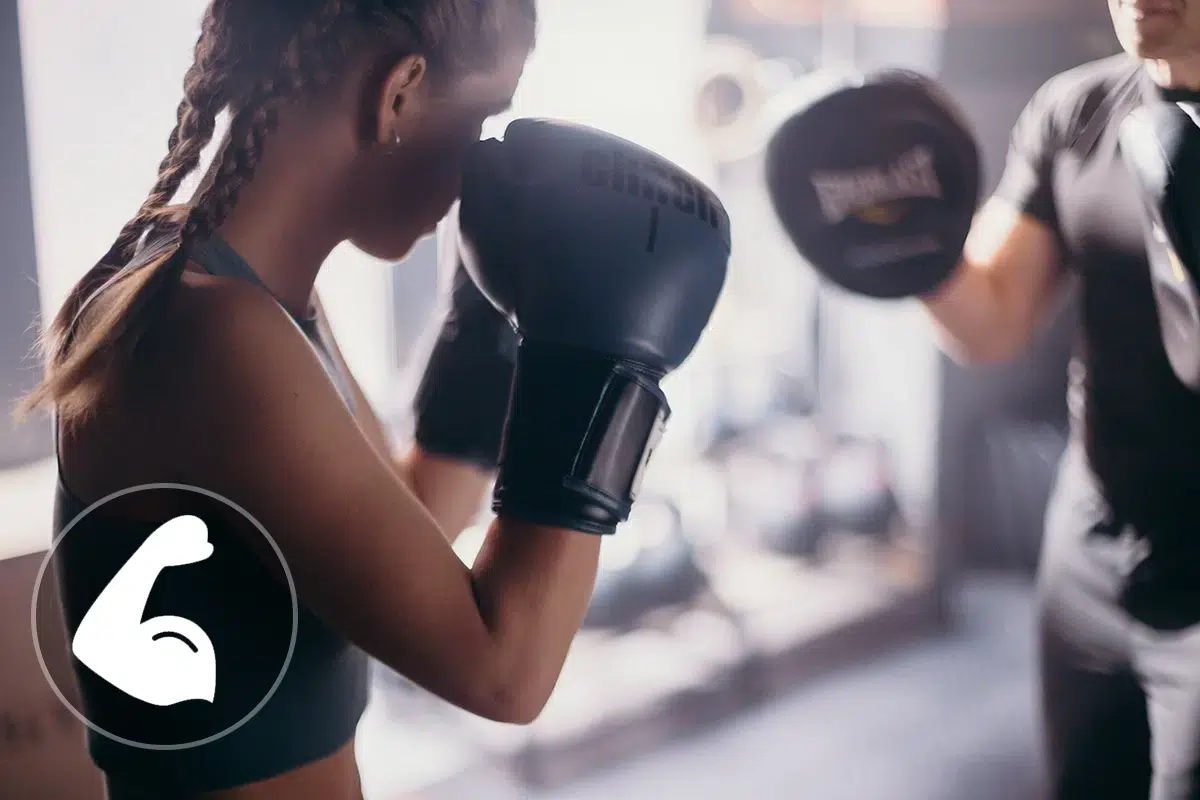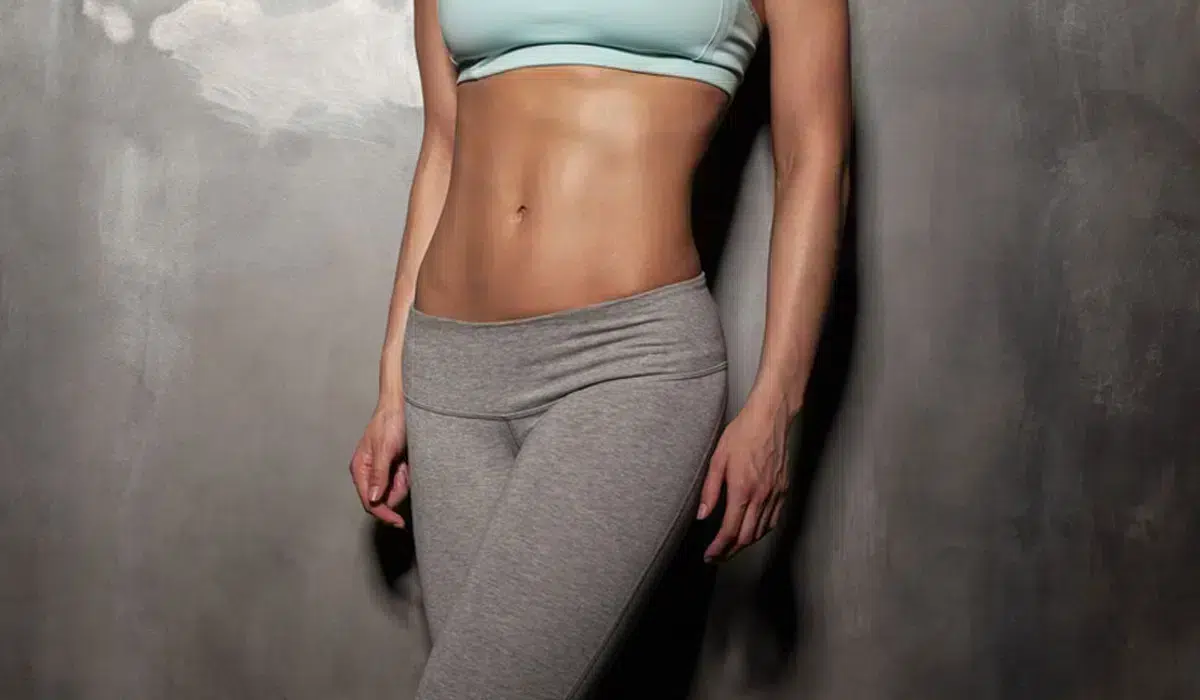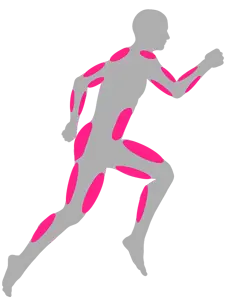Show summary Hide summary
Which muscle group are we activating when boxing?

Everything you need to know about boxing
What muscles does boxing work? What parts of the body are we using and toning while boxing? Use the tool below to see the list of all the body parts that are trained while boxing!
Boxing for fitness and strength training

What muscles are we training when boxing?
Depending on the sport practised, certain areas of the body will be worked harder than others, but what about when you box? Will you tone and refine your figure by boxing? Below is a list of the muscles and muscle groups strengthened and sculpted by boxing!
Upper limbs (shoulders, arms and forearms)
- Shoulder muscles: These are all the muscles that link the arm to the rest of the body. They include the muscles of the rotator cuff (subscapularis, infraspinatus, lesser ring, supraspinatus) and the trapezius, deltoid, grand dentle and angular muscles. These muscles provide mobility for the arms and shoulders (rotation, elevation).
- The biceps: These muscles are located on the front of the arm and are surrounded by two joints (scapulohumeral, elbow). The biceps comprise two muscles(long biceps and short biceps) which help flex and rotate the arms.
- The triceps: Located on the inside of the arm, they comprise three muscles (the vastus lateralis, the vastus medialis and the long head of the triceps) which complement the flexor role of the biceps brachii. The triceps allow the forearm to be extended.
Trunk and pelvis (Chest, stomach and back)
- The pectorals: The pectoralis major, pectoralis minor and pectoralis major are located in the thorax region and ensure the mobility of the arms and the stability of the shoulder region.
- The abdominals: These are made up of several layers of muscle(rectus abdominis, external oblique, internal oblique, transverse) which are responsible for flexing and rotating the trunk.
Lower limbs (buttocks, thighs and calves)
- Buttocks: Located at the intersection of the lower limbs and the trunk, the gluteal muscles(gluteus maximus, gluteus medius and gluteus minimus) are among the largest and most powerful muscles in the body. In particular, they provide mobility for the thigh and support for the pelvis.
- The quadriceps: These are located at the front of the thigh. The quadriceps are each made up of 4 muscles (the vastus femoris or rectus femoris, the vastus lateralis, the vastus medialis and the vastus intermedius). These muscles facilitate flexion of the thigh on the hip and extension of the leg on the thigh.
- The hamstring muscles: Located on the back of the thigh, there are four of these muscles(biceps femoris, semitendinosus and semitendinosus). They ensure flexion of the leg and extension of the thigh.
- Calf muscles: Also known as the sural triceps, the calf muscles are made up of 3 muscle groups, including the soleus and the gastrocnemius. These muscles help to extend the foot down the leg
Boxing is a complete physical activity. It’s a high-intensity sport that works the heart and strengthens the muscles. Kicking, jumping and moving around frequently tone the lower body, particularly the calves, thighs and buttocks. Punches, elbows and trunk rotations work the abs, back and arms.
Everything you need to know about boxing
What muscles are used in different sports?
All sports in detail!












































